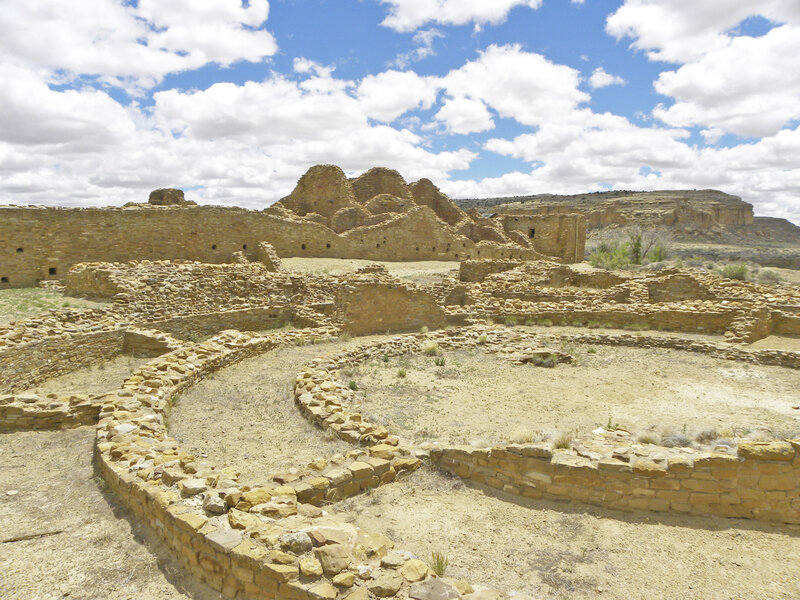Why scientists say a matrilineal elite ruled New Mexico’s Pueblo Bonito
Loading...
More than a century ago, archeologists working in New Mexico’s Chaco Canyon unearthed a hidden crypt containing the remains of 14 people: members of an elite, judging by the jewelry with which they were buried, roughly 1,000 years ago.
The crypt was at the center of Pueblo Bonito, the ruins of a 650-room labyrinth. It was also at the center of a debate: Did the Chaco society operate with a strict hierarchy – and not governed communally, the way some Native American tribes are today?
Now, researchers say an analysis of DNA extracted from the crypt’s remains, combined with radiocarbon dating techniques, offers new revelations.
In a study published this week in the journal Nature Communications, the team writes that nine of the people buried in the Pueblo Bonito crypt were members of a dynasty extending over about 300 years and were related through their mothers. In other words, Chaco leadership was inherited through their mothers.
Their discovery of a matrilineal elite could shift researchers’ theories about the nature of power in Chaco society.
"For the first time, we're saying that one kinship group controlled Pueblo Bonito for more than 300 years," Steve Plog, a University of Virginia anthropologist and one of the study's co-authors, told Penn State’s news service. "This is the best evidence of a social hierarchy in the ancient Southwest."
The first of the 14 to be buried, the team writes, was a man in his 40s who died from a blow to the head, after which he was interred with thousands of turquoise and shell beads and artifacts acquired from as far away as the Pacific Ocean and the Gulf of California – making it the “richest burial known in the American Southwest”.
"It has been clear for some time that these were venerated individuals, based on the exceptional treatment they received in the afterlife – most Chacoans were buried outside of the settlement and never with such high quantities of exotic goods," Adam Watson, a postdoctoral fellow in the American Museum of Natural History's anthropology division, told Penn State’s news service. "But previously one could only speculate about the exact nature of their relationship to one another."
Using DNA from mitochondria, sub-cellular structures that inherit DNA through the mother alone, the scientists concluded that the other eight people whose DNA they tested shared a maternal ancestor with him, according to Scientific American.
That technique is an innovative one. And in providing evidence for the hereditary nature of power among the Chacoans, it also achieves a notoriously difficult feat, as National Geographic notes: finding evidence of hereditary leadership in societies that did not have writing systems.
"If these results hold up, I think it's a game changer," American Museum of Natural History archaeologist David Thomas, who was not involved in the study, told the magazine.
But it has also raised questions about whether the researchers should have gotten the permission of tribes that consider the Chacoans their ancestors, including the Navajo, Hopi, Zuni, and Acoma.
The Native American Graves Protection Act of 1990 requires that researchers using federal funding return human remains found on federal or tribal lands to Native American groups who can prove a direct cultural connection with them. In a statement cited by Scientific American, however, the paper’s authors wrote that the ancestral link to “specific modern communities based on existing data” was impossible to establish due to the “cultural complexity of the region.”
Critics differ.
“I am dismayed that there was not an effort to engage contemporary tribal leaders prior to undertaking and publishing this study,” Rebecca Tsosie, a Native American professor at the University of Arizona who specializes in federal Indian law, told the magazine.
The research, she added, constitutes a “prime example” of “a study by cultural outsiders to dictate the truth of the history and structure of governance of the cultural insiders, Pueblo Indian nations.”








